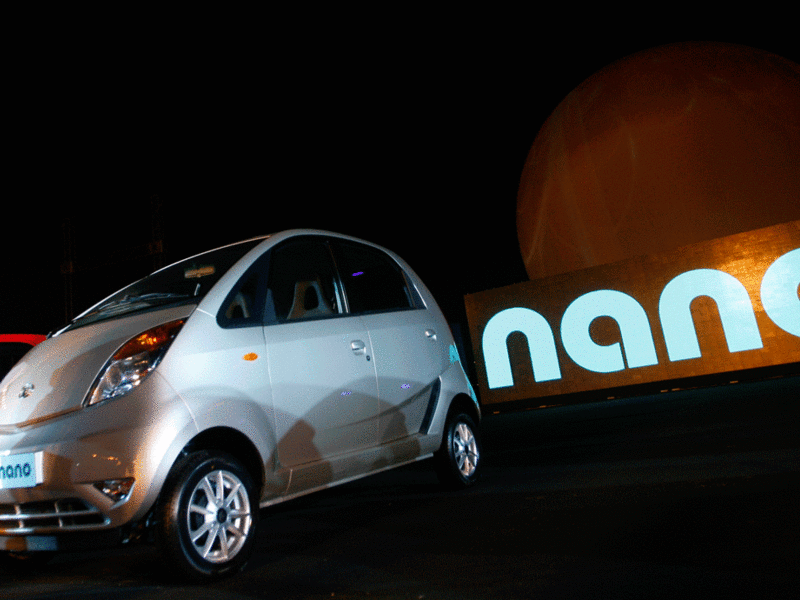
The Tata Nano, billed as the world’s most inexpensive car, priced as low as $2,000, is formally introduced on March 23, 2009, in Mumbai, giving more residents of one the world’s most populous countries the chance to buy a car for the first time.
Tata Group Chairman Ratan Tata, who personally championed the project, saw the Tata as a replacement for the droves of motorcycles and scooters on India’s roads.
The herculean task of engineering and building the Nano became a source of national pride and industrial perseverance in India.
Since the Nano was first shown, Tata’s main production plant had to be moved following land protests, the company posted its first annual loss in seven year and its credit rating was downgraded with the threat of further downgrades.
Because demand far outstripped supply, the first 100,000 owners were picked at random.
The Nano body and chassis were made of steel while the bumpers were plastic. At 122 inches long, it was the shortest four-passenger car marketed in India, though it appeared bigger because of its height and wide stance.
Suppliers were proud to be a part of the project — hailed as the people’s car of India — and openly flaunted their contributions to the Nano.
It was equipped with a 32-hp, 624-cc, two-cylinder engine mounted in the rear. The engine was accessed via a removable panel underneath the foldable rear seat. Though it was a fraction of the size of most economy-car motors, the all-aluminum engine provided reasonable pep and acceleration. Engine noise was also far less than critics imagined given the size and simplicity of the Nano.
There was one windshield wiper, and the steering lacked power assistance but directed the car as needed.
Three models were available in India at launch: the base, midlevel CX and LX. With taxes and fees, the base Nano was priced at $2,200; the fully equipped LX was $3,360. The Nano’s nearest rival, the Maruti 800, sold for twice as much at the time.
After sales fell short of company expectations, the Nano was retooled and repositioned as a “smart city car” in 2013 with power steering options, improved interior and exterior, additional colors and better fuel efficiency.
Still, even with all the publicity, the Nano — hailed as a milestone in frugal engineering — was dropped in 2018.
In the end, it fell short on safety, ran behind schedule and faired poorly on crash tests.
But more than anything, analysts said the India market had matured beyond crude, basic mobility way ahead of schedule.